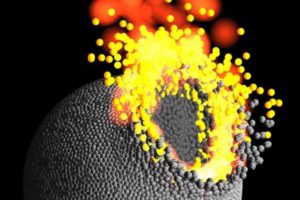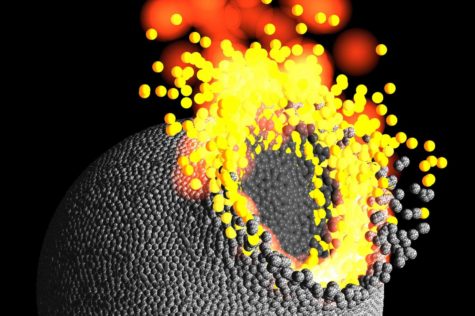
BRISTOL, England — The formation of Earth and the rest of the solar system has long been a challenging subject of study for scientists. New research may uncover the origins of Earth and Mars, showing how collisions between the earliest building blocks of our planets would be key in the development of their unique, rocky compositions.
When the earth was formed, 40% of its mass was lost during a process called accretion, researchers at the University of Bristol believe. Accretion is the gradual accumulation of additional material to a planet’s core. Over time, Earth and Mars grew overall in size but lost much of their planetary size while they were being pummeled constantly with planetary bodies.
The research team’s survey shows that while Earth and Mars were being formed in the early solar system, they lost large portions of their material as it accumulated gradually from accretion.

This violent and chaotic process generates incredible heat levels, as huge chunks of rock collide with each other at several kilometers per second. The heat is so intense that it melts rock, creating the magma oceans most geologists think the early earth held.
A temporary atmosphere is formed during accretion, made of vaporized rock from the collisions, but before the planet grows to the size of Mars, its gravitational pull is too weak to hold this inclement silicate atmosphere for long.
The repeated gain and loss of this vapor envelope over the planet causes the composition of the planet to change dramatically.
“We have provided evidence that such a sequence of events occurred in the formation of the Earth and Mars, using high precision measurements of their magnesium isotope compositions,” explains lead author Dr. Remco Hin, of the University of Bristol’s School of Earth Sciences, in a release. “Magnesium isotope ratios change as a result of silicate vapour loss, which preferentially contains the lighter isotopes. In this way, we estimated that more than 40% of the Earth’s mass was lost during its construction. This cowboy building job, as one of my co-authors described it, was also responsible for creating the Earth’s unique composition.”
Dr. Hin and his colleagues wrote in their study also that the Earth’s violent and uneven construction process eventually gave rise to its unique chemical makeup.
“Our work changes our views on how planets attain their physical and chemical characteristics,” he says. “While it was previously known that building planets is a violent process and that the compositions of planets such as Earth are distinct, it was not clear that these features were linked. We now show that vapour loss during the high energy collisions of planetary accretion has a profound effect on a planet’s composition.”
Hin believes that this finding is likely applicable to other planets in the solar system and even those in other galaxies as well.
The study’s findings were published in the journal Nature.

Are explosions and collisions the only way planets are formed? Couldn’t those close “hot Jupiter” exoplanets we’ve spotted really close to their stars form by massive discharge of flaring? The question then would be why do they discharge/flare?
And Mars’s northern surface looks like it was excavated or stripped while the southern pole looks like much of that material fell was redeposited… Couldn’t that happen via electric discharge machining? Which would explain the Vallis Maranaris which has cleanly scalloped walls and no River looks to have formed it.